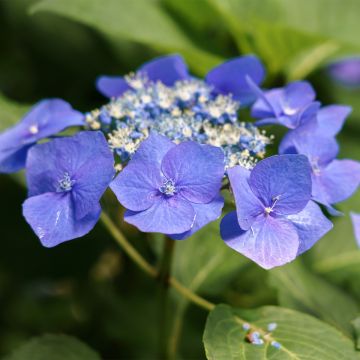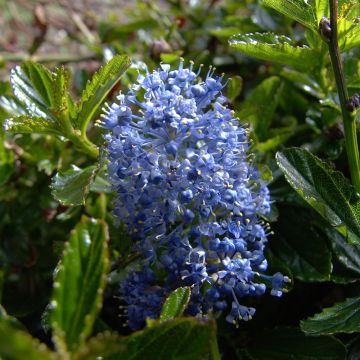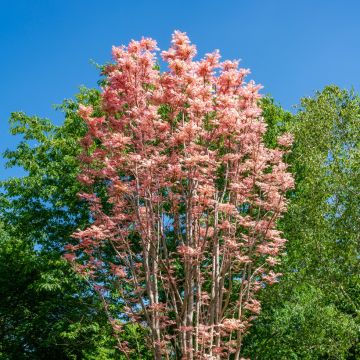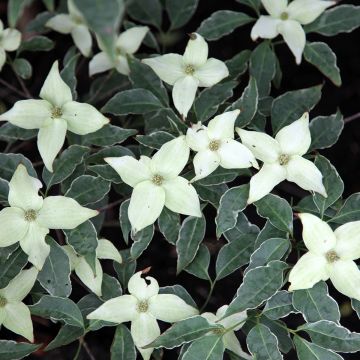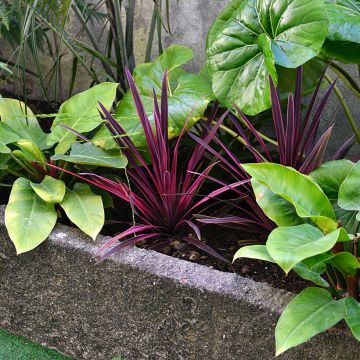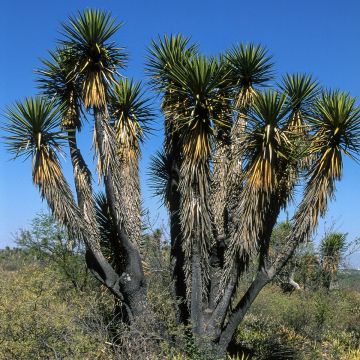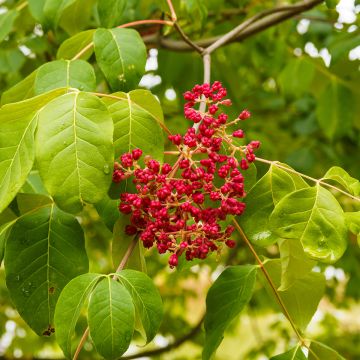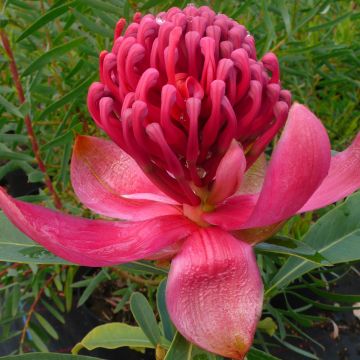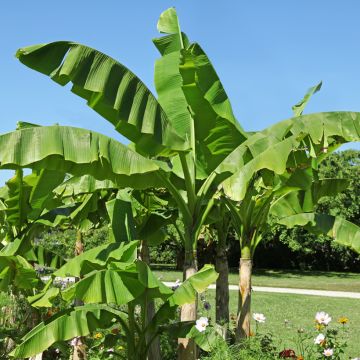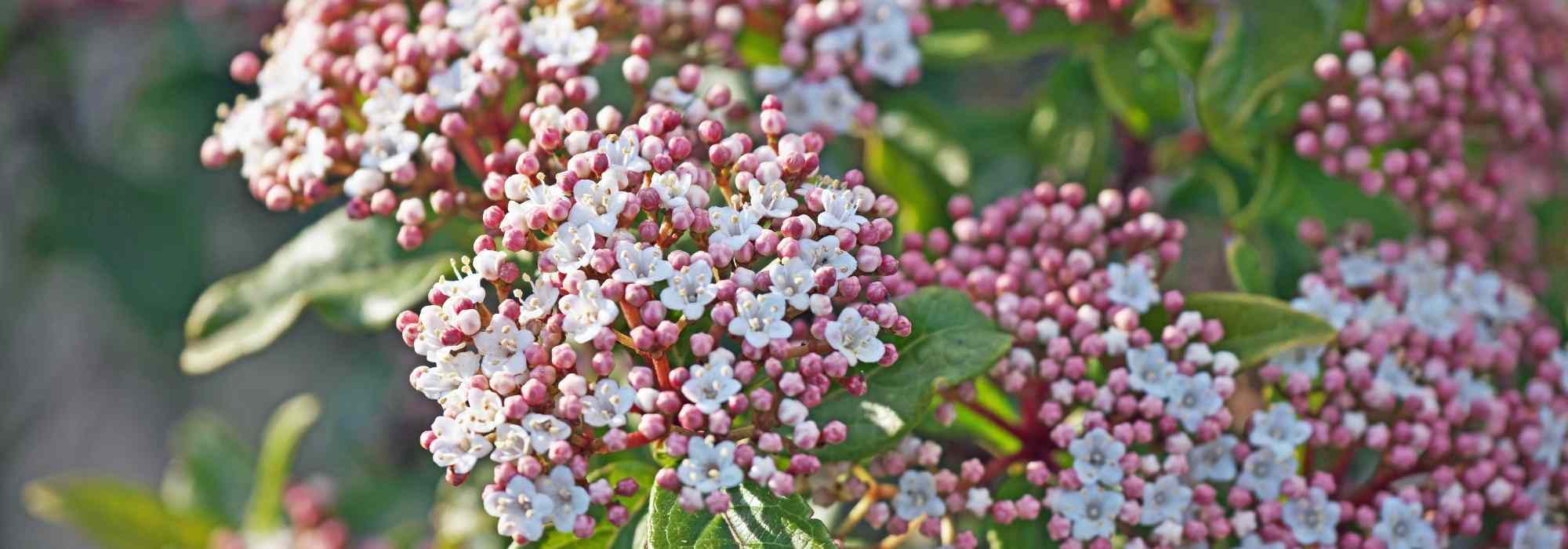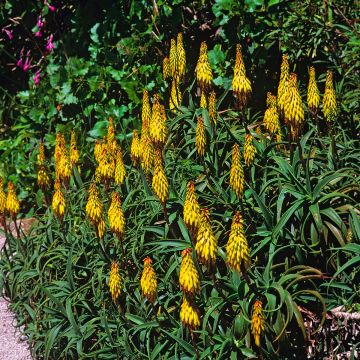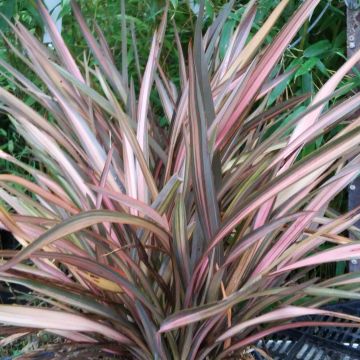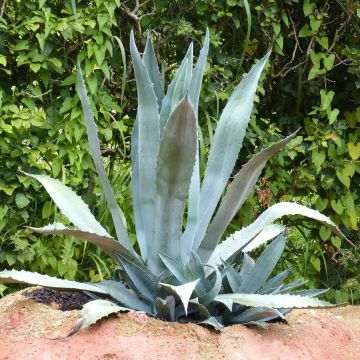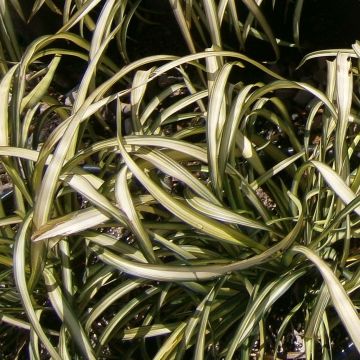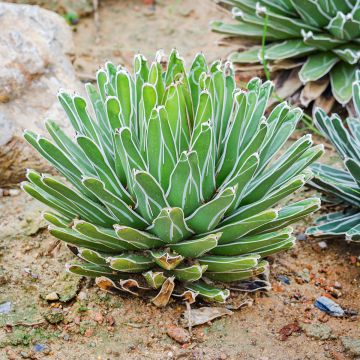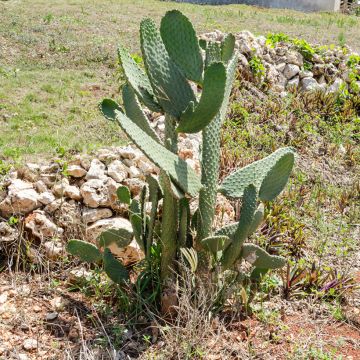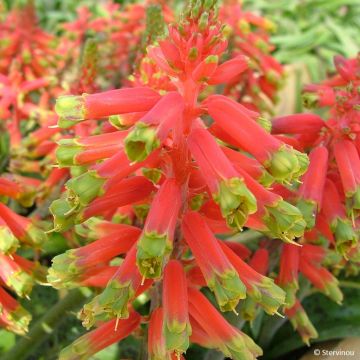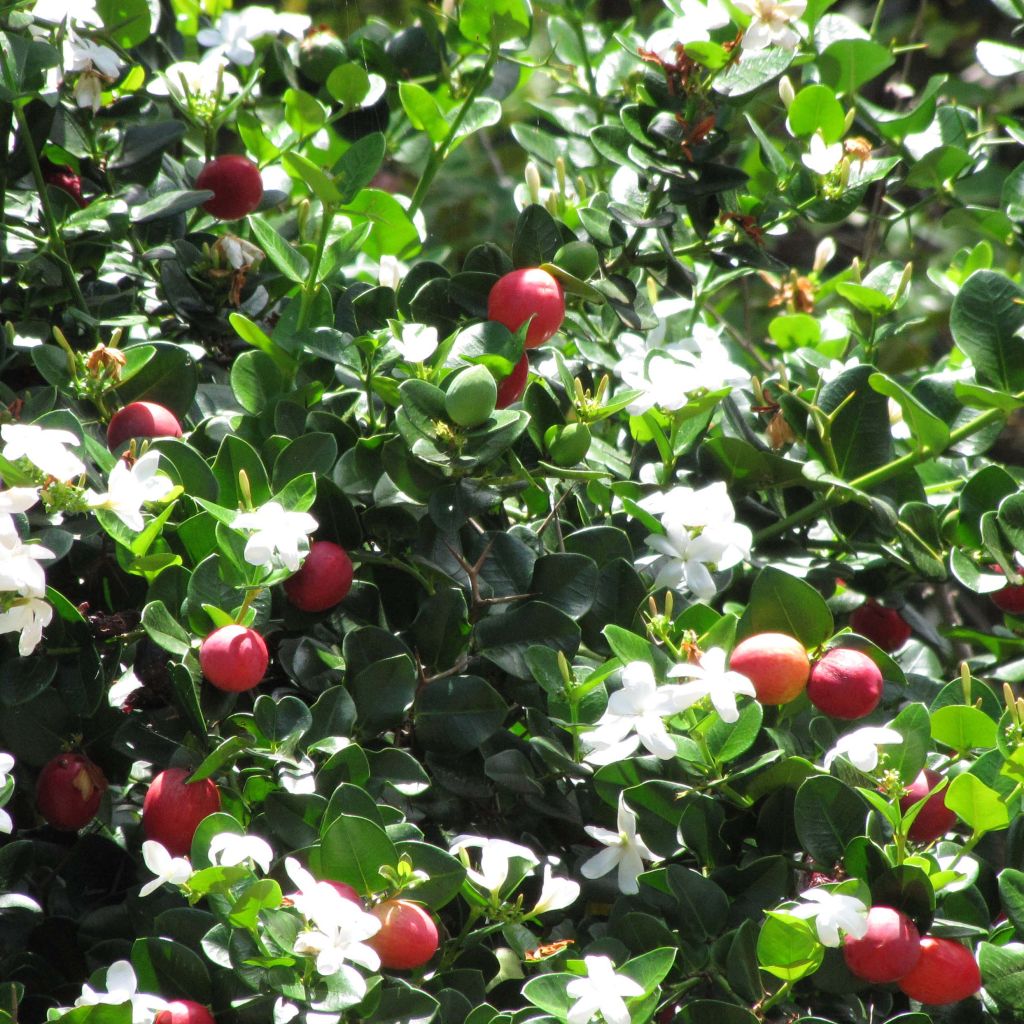

Carissa macrocarpa
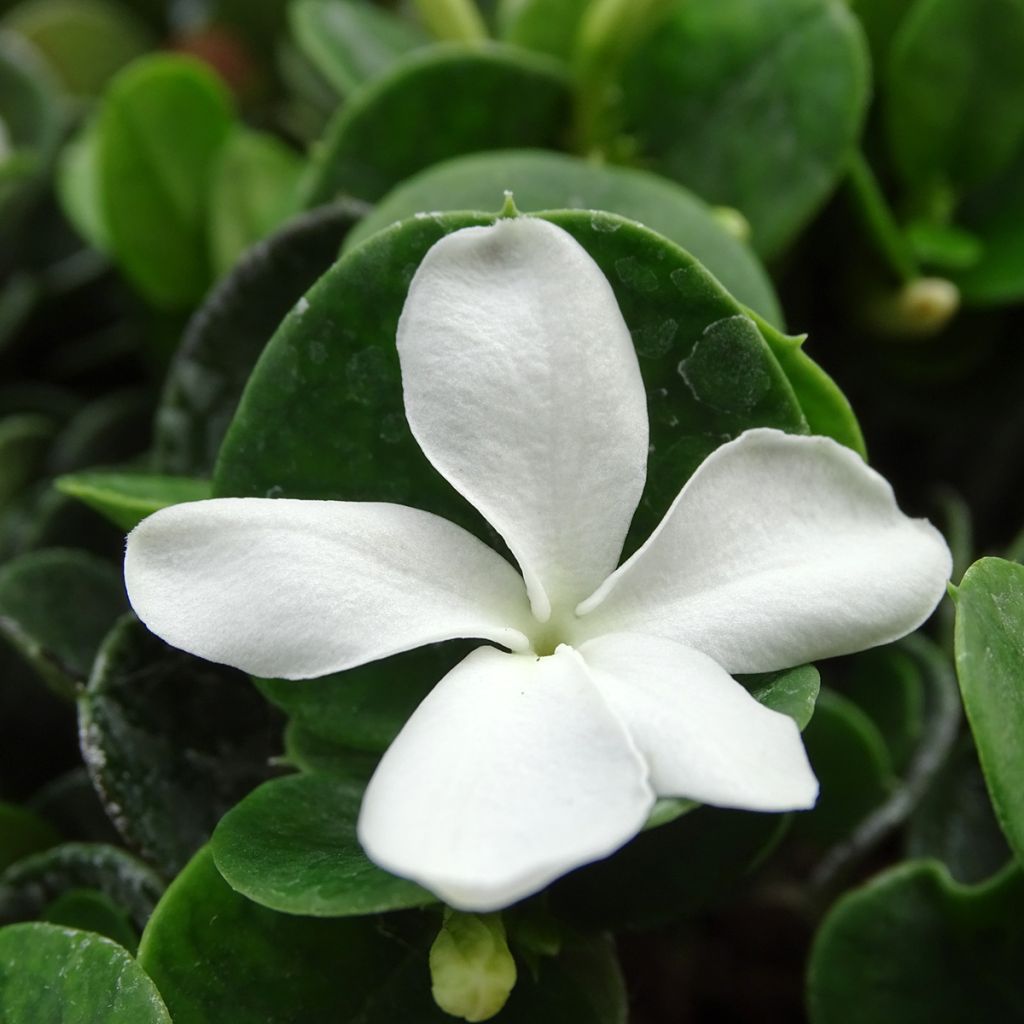

Carissa macrocarpa
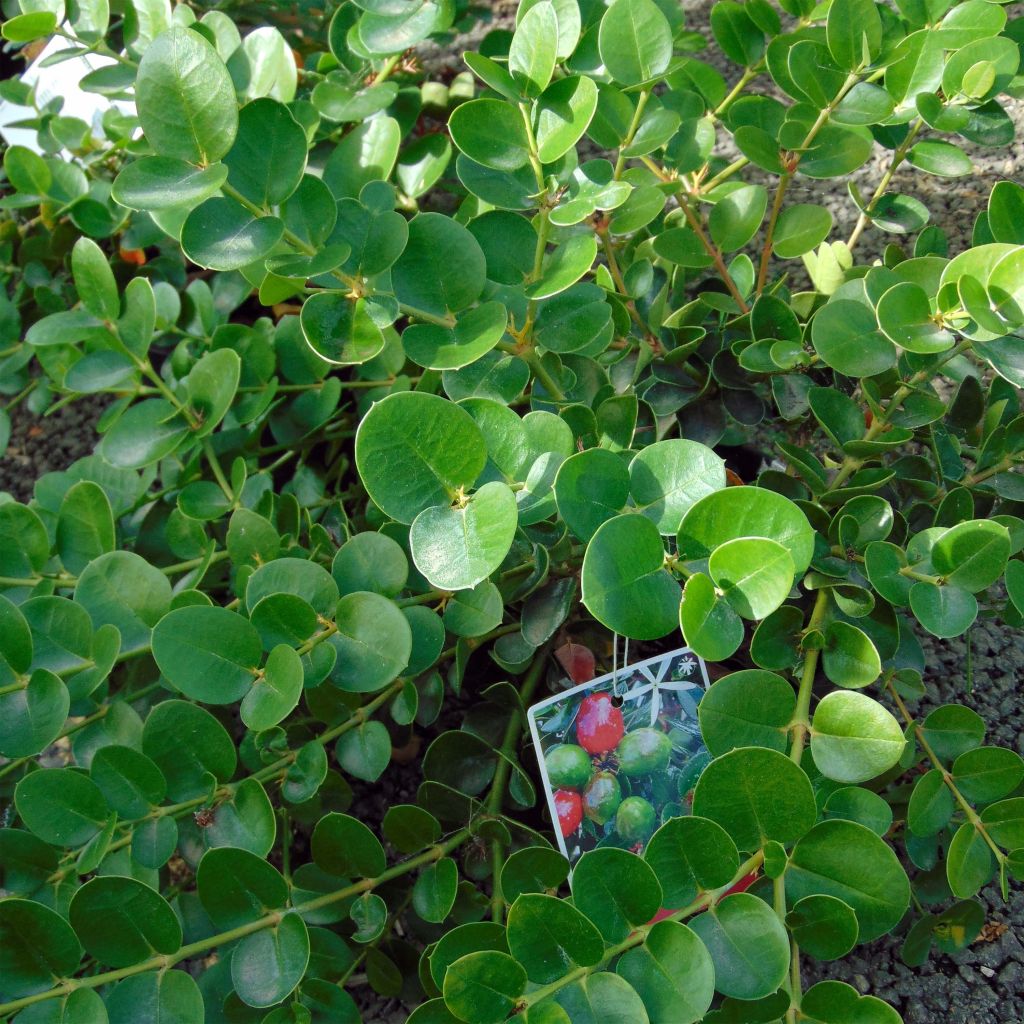

Carissa macrocarpa
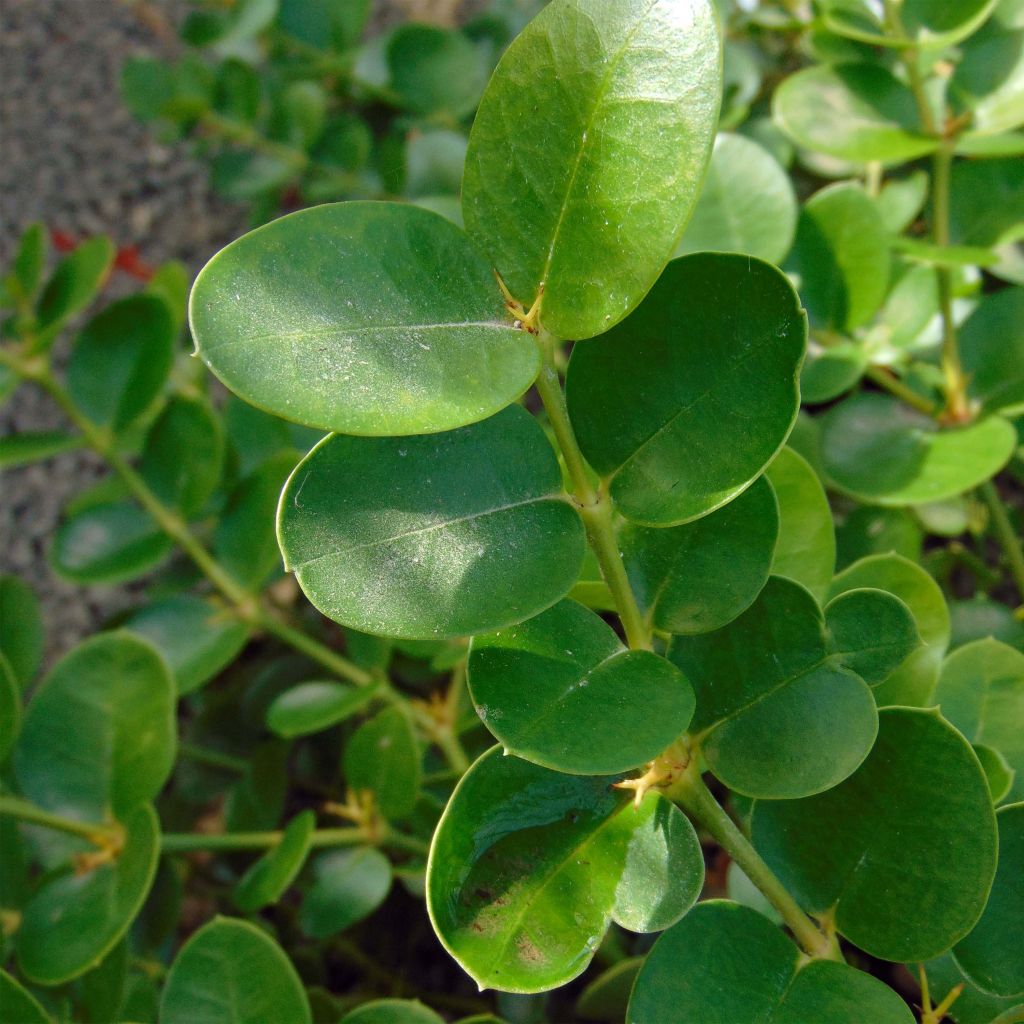

Carissa macrocarpa
Carissa macrocarpa
Carissa macrocarpa
Natal Plum, Large-fruited Carissa, Amatungulu, Large Num-Num
Ordered 3 plants, received very well packaged, they are much bigger than announced. I am delighted with my purchase, thank you.
nathalie89120, 26/01/2025
Special offer!
Receive a €20 voucher for any order over €90 (excluding delivery costs, credit notes, and plastic-free options)!
1- Add your favorite plants to your cart.
2- Once you have reached €90, confirm your order (you can even choose the delivery date!).
3- As soon as your order is shipped, you will receive an email containing your voucher code, valid for 3 months (90 days).
Your voucher is unique and can only be used once, for any order with a minimum value of €20, excluding delivery costs.
Can be combined with other current offers, non-divisible and non-refundable.
Home or relay delivery (depending on size and destination)
Schedule delivery date,
and select date in basket
This plant carries a 24 months recovery warranty
More information
We guarantee the quality of our plants for a full growing cycle, and will replace at our expense any plant that fails to recover under normal climatic and planting conditions.

Does this plant fit my garden?
Set up your Plantfit profile →
Description
Carissa macrocarpa (grandiflora) is also called the Natal Plum due to its South African origins and its red, edible and tasty fruits, which are oval in shape and similar in size to our plums. But the comparison stops there: they do not belong to the same botanical family at all, and the 'plums' of our Carissa contain several seeds that are strongly recommended not to be ingested. It is a beautiful evergreen bush with a long and pleasantly fragrant flowering period; its small white flowers resembling those of jasmine, both in structure and fragrance, and especially noticeable at night. In mild climates, especially by the sea, it makes an excellent defensive hedge, due to the long sharp prickles that stand out among its small dark and leathery leaves. It adapts well to container cultivation, allowing it to be placed on the terrace and protected from frost in winter, outside of colder coastal regions.
Carissa macrocarpa is an evergreen shrub of the Apocynaceae family, just like oleanders, false jasmine (Trachelospermum jasminoides), and periwinkle. It is native to the eastern coast of South Africa, where it grows on the edge of evergreen forests. While it can grow into a small tree reaching over 4 m (13 ft 1 in) in height and 5.5 m (18 ft) width in its natural environment, it will not exceed 3 m (9 ft 10 in) in height and 3.5 m (11 ft 5 in) in spread in colder climates, and will remain even smaller in containers. Its habit is both upright, bushy, and dense, and spreading, wider than tall. Its growth rate varies depending on the growing conditions: in rich, moist, and deep soil, it will be more vigorous than in sandy, poor, and salty soil. Its branches, highly branched, have long bifid, sharp spines measuring 4 to 5 cm (1.6 to 2 in) in length, and are greyish in colour. The evergreen foliage is composed of small, rounded, and leathery leaves: thick, dark green and glossy on the upper side, lighter green and matte underneath. They are densely arranged on the branches, almost imbricate. The flowering period is particularly long, from May to September. From coiled flower buds on the right side, small white flowers with a diameter of 3 cm (1.2 in) bloom, composed of a tube expanding into 5 lanceolate petals arranged in a star shape. Their fragrance, mainly nocturnal, attracts pollinators that work at night. The fruit is fleshy, smooth, oval to oblong, measuring 4 to 6 cm (1.6 to 2.4 in) in length and 2 to 4 cm (0.8 to 1.6 in) in width. They are ripe and edible when they turn magenta-red. Juicy, sweet, rich in vitamin C, and with a mild flavour, they contain about fifteen small brown and flat seeds that are toxic if ingested. These beautiful 'plums' can be used to make delicious jelly.
Resistant to drought and salt spray but not very hardy (down to -5 °C (23 °F)), the Natal plum is well adapted to coastal areas, from the Mediterranean coast to the Atlantic coast spared by severe frosts. Its formidable spines require it to be kept away from high traffic areas and young children. It can be used to create evergreen hedges at the edge of the garden, along with laurel-tin, Griselinia littoralis, myrtles, and oleanders. They will protect it from wind, unwanted visitors, and prying eyes. It adapts well to container cultivation, which can be placed on the terrace or balcony. This cultivation method allows gardeners in colder regions to protect it from severe frost in an unheated greenhouse or conservatory in winter. Its height will be less impressive in pots, but the plant will quickly fill the available space by spreading. In open ground, it can also be used in a grove, alone or in combination with other evergreen shrubs such as purple laurel-tin, Photinia Pink Marble, Elaeagnus, persistent Ceanothus, or Pittosporum. It will also be very useful for creating a dense screen on a terrace, facing into prevailing winds.
Report an error about the product description
Carissa macrocarpa in pictures
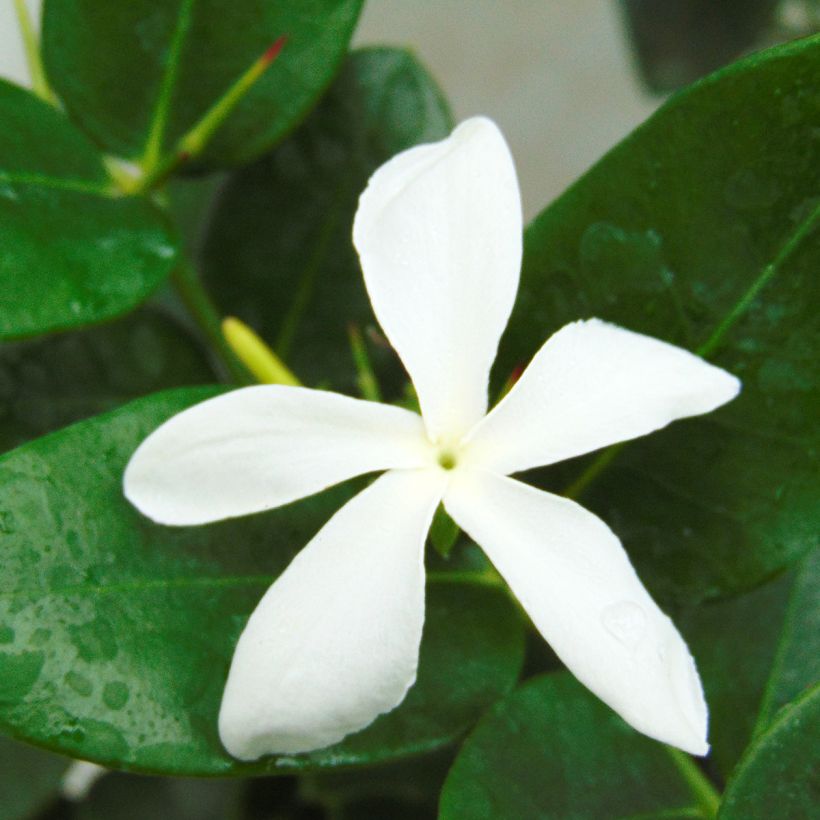

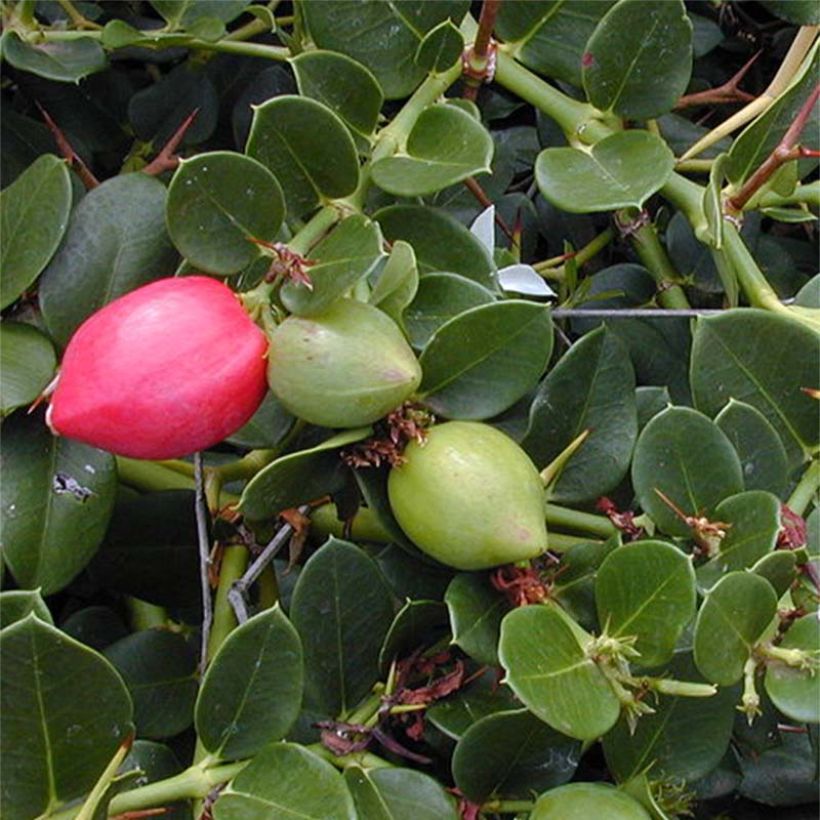

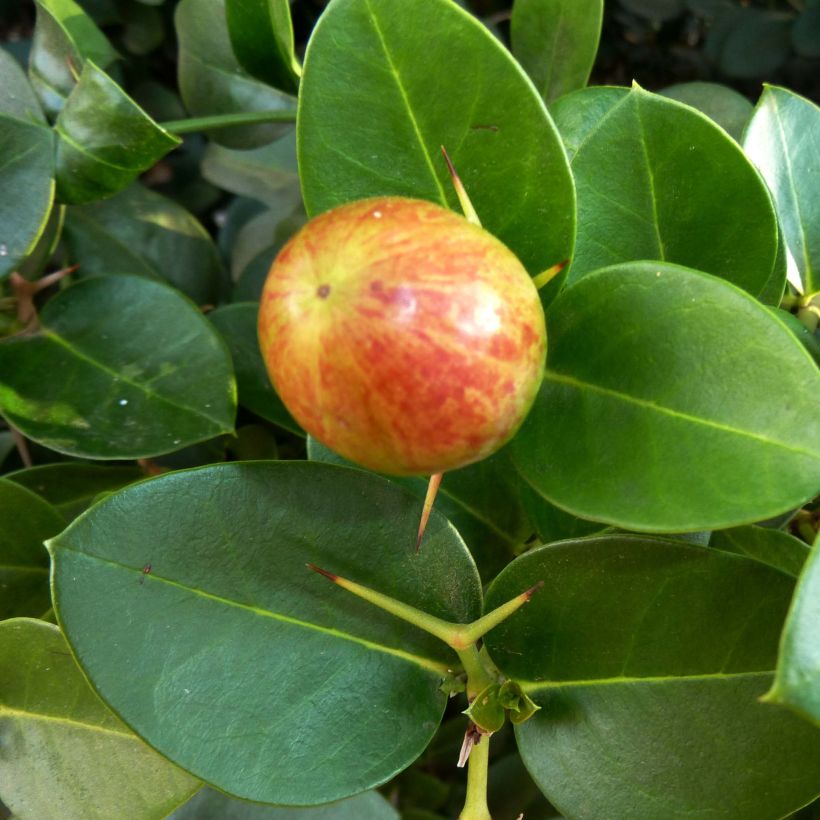

Plant habit
Flowering
Foliage
Botanical data
Carissa
macrocarpa
Apocynaceae
Natal Plum, Large-fruited Carissa, Amatungulu, Large Num-Num
South Africa
Other Shrubs A to Z
View all →Planting and care
Carissa macrocarpa is preferably planted in spring, in a very mild climate, or at the very least in September-October in a hotter and drier summer climate. It is hardy down to a minimum of -5 °C (23 °F) in perfectly drained soil and when sheltered from dry and cold winds. Its foliage is damaged at -3 °C (26.6 °F). Therefore, it is not recommended to use it in regions with harsh and humid winters. It adapts to any ordinary soil that is properly loosened and well drained, but prefers a light, sandy, humus-rich, deep soil without too much limestone. It withstands periods of drought well, but prefers a soil that remains moist to support its growth. Young plants from seed grow very slowly during the first years, favouring the development of their powerful root system at the expense of vegetation. This bush fears heavy, waterlogged soils in winter. However, it is quite resistant to drought once well established. A partially shaded or sunny, but not scorching, exposure, especially in hot climates, should be chosen. This shrub will be more floriferous in the sun.
It tolerates light pruning at the end of flowering. Beware of the formidable thorns! Cuts must be clean, made with a well-sharpened and clean blade tool.
Insects and diseases:
The Carissa is not subject to pest attacks.
Propagation: by sowing or propagation by cuttings in summer.
Planting period
Intended location
Care
Planting & care advice
-
, onOrder confirmed
Reply from on Promesse de fleurs
Similar products
Haven't found what you were looking for?
Hardiness is the lowest winter temperature a plant can endure without suffering serious damage or even dying. However, hardiness is affected by location (a sheltered area, such as a patio), protection (winter cover) and soil type (hardiness is improved by well-drained soil).

Photo Sharing Terms & Conditions
In order to encourage gardeners to interact and share their experiences, Promesse de fleurs offers various media enabling content to be uploaded onto its Site - in particular via the ‘Photo sharing’ module.
The User agrees to refrain from:
- Posting any content that is illegal, prejudicial, insulting, racist, inciteful to hatred, revisionist, contrary to public decency, that infringes on privacy or on the privacy rights of third parties, in particular the publicity rights of persons and goods, intellectual property rights, or the right to privacy.
- Submitting content on behalf of a third party;
- Impersonate the identity of a third party and/or publish any personal information about a third party;
In general, the User undertakes to refrain from any unethical behaviour.
All Content (in particular text, comments, files, images, photos, videos, creative works, etc.), which may be subject to property or intellectual property rights, image or other private rights, shall remain the property of the User, subject to the limited rights granted by the terms of the licence granted by Promesse de fleurs as stated below. Users are at liberty to publish or not to publish such Content on the Site, notably via the ‘Photo Sharing’ facility, and accept that this Content shall be made public and freely accessible, notably on the Internet.
Users further acknowledge, undertake to have ,and guarantee that they hold all necessary rights and permissions to publish such material on the Site, in particular with regard to the legislation in force pertaining to any privacy, property, intellectual property, image, or contractual rights, or rights of any other nature. By publishing such Content on the Site, Users acknowledge accepting full liability as publishers of the Content within the meaning of the law, and grant Promesse de fleurs, free of charge, an inclusive, worldwide licence for the said Content for the entire duration of its publication, including all reproduction, representation, up/downloading, displaying, performing, transmission, and storage rights.
Users also grant permission for their name to be linked to the Content and accept that this link may not always be made available.
By engaging in posting material, Users consent to their Content becoming automatically accessible on the Internet, in particular on other sites and/or blogs and/or web pages of the Promesse de fleurs site, including in particular social pages and the Promesse de fleurs catalogue.
Users may secure the removal of entrusted content free of charge by issuing a simple request via our contact form.
The flowering period indicated on our website applies to countries and regions located in USDA zone 8 (France, the United Kingdom, Ireland, the Netherlands, etc.)
It will vary according to where you live:
- In zones 9 to 10 (Italy, Spain, Greece, etc.), flowering will occur about 2 to 4 weeks earlier.
- In zones 6 to 7 (Germany, Poland, Slovenia, and lower mountainous regions), flowering will be delayed by 2 to 3 weeks.
- In zone 5 (Central Europe, Scandinavia), blooming will be delayed by 3 to 5 weeks.
In temperate climates, pruning of spring-flowering shrubs (forsythia, spireas, etc.) should be done just after flowering.
Pruning of summer-flowering shrubs (Indian Lilac, Perovskia, etc.) can be done in winter or spring.
In cold regions as well as with frost-sensitive plants, avoid pruning too early when severe frosts may still occur.
The planting period indicated on our website applies to countries and regions located in USDA zone 8 (France, United Kingdom, Ireland, Netherlands).
It will vary according to where you live:
- In Mediterranean zones (Marseille, Madrid, Milan, etc.), autumn and winter are the best planting periods.
- In continental zones (Strasbourg, Munich, Vienna, etc.), delay planting by 2 to 3 weeks in spring and bring it forward by 2 to 4 weeks in autumn.
- In mountainous regions (the Alps, Pyrenees, Carpathians, etc.), it is best to plant in late spring (May-June) or late summer (August-September).
The harvesting period indicated on our website applies to countries and regions in USDA zone 8 (France, England, Ireland, the Netherlands).
In colder areas (Scandinavia, Poland, Austria...) fruit and vegetable harvests are likely to be delayed by 3-4 weeks.
In warmer areas (Italy, Spain, Greece, etc.), harvesting will probably take place earlier, depending on weather conditions.
The sowing periods indicated on our website apply to countries and regions within USDA Zone 8 (France, UK, Ireland, Netherlands).
In colder areas (Scandinavia, Poland, Austria...), delay any outdoor sowing by 3-4 weeks, or sow under glass.
In warmer climes (Italy, Spain, Greece, etc.), bring outdoor sowing forward by a few weeks.






























